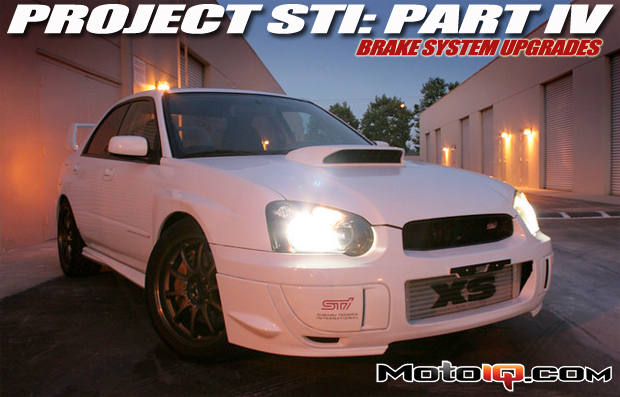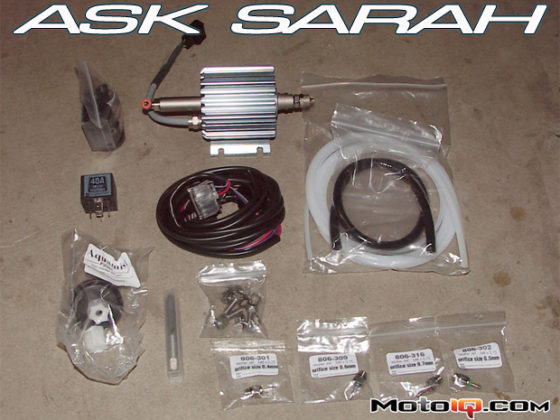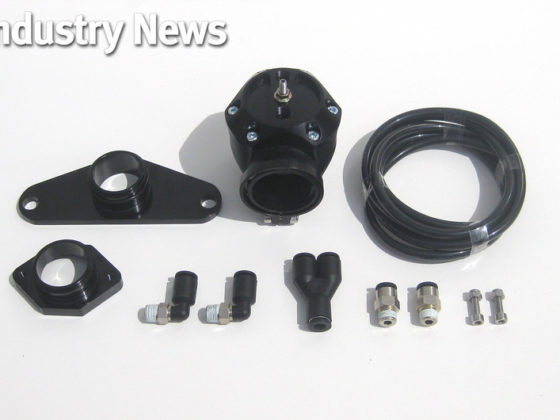,
Having good brake rotors means nothing if the operating temperature range of your brake pads is being exceeded on the track. It was obvious that we were right at the edge of the stock pads effectiveness with sticky tires and increased horsepower at Willow Springs, a track noted for being easy on brakes. At any other track the brakes would probably have faded into oblivion. Although the car sees track use, it is also a daily driver so having a brake pad with a wide effective temperature range was also a must. For help and advice on all things braking, we turned to our friend and supplier of brake pads for our race team, Monty Holt of Bits and Pieces Motorsports.
 |
| The factory has this heavy mass damper to reduce squealing on the rear brakes, we left them off to save a few pounds of unsprung weight. |
Monty recommended the Hawk HP+ brake pad. For our road racing program we use Hawk products supplied by Monty exclusively and have always been impressed by their performance and durability. The HP+ is a semi metallic formula modified with the addition of iron and carbon powder. This gives it a consistent coefficient of friction over a wide range of temperatures. The HP+ can still stop while cold and works well enough when hot that it can be track driven, especially on a car with large factory brakes like the STi that just needs a little help to prevent fade.
 |
| The rear rotor is a good looking piece and functional too. |
To improve pedal feel, Stoptech supplied some of their braided steel brake lines. The lines have a chemically inert Teflon inner hose covered by a reinforcing ply of woven stainless steel. This combination is very resistant to ballooning under pressure unlike the stock rubber lines, thus every bit of brake pedal travel goes to moving the pistons in the calipers. We were surprised how much difference these lines made. The pedal feels rock solid like a real racecar, impressive considering the stock pedal feel was quite good as well. The car’s ABS system seemed to like it too, seemingly cycling faster with a higher resolution. We don’t know if that’s true or not but our seat of the pants told us so. Finally, to help protect the braided steel from debris damage and to prevent the rough steel braid itself from abrading parts of our car, the outer hose is covered with a layer of smooth PVC, a nice added feature.
 |
| The quality and fit of the Stoptech lines is a notch above the rest of the aftermarket. Motul RBF 600 is a superior brake fluid for both street and track use. |
The Stoptech brake lines are DOT registered and meet all performance requirements set by the DOT. Many braided steel lines are not, and one of the long term issues could be that the steel braid fatigues and breaks. To receive DOT compliance certification, lines must pass the dreaded whip test amongst a host other performance tests for the lines and components. Although braided steel lines are very strong, they have traditionally had a very hard time passing this test. During the whip test the brake line is mounted by one end to a rotating fixture and spun at a certain rpm for a given time. The brake line cannot fail during the test period. Stoptech lines have a molded plastic reinforcement around the end fittings that reduces the fatigue of the line in this area, allowing the passing of the whip test with ease. We also noted the quality of the fittings and the superior fit of the Stoptech parts in general. This is a welcome change after many years of jury rigging most braided brake line kits with zip ties, Adel clamps and other devices to get a safe fitment. It is refreshing that the Stoptech lines simply slide right in with no hassles or fiddling around.



